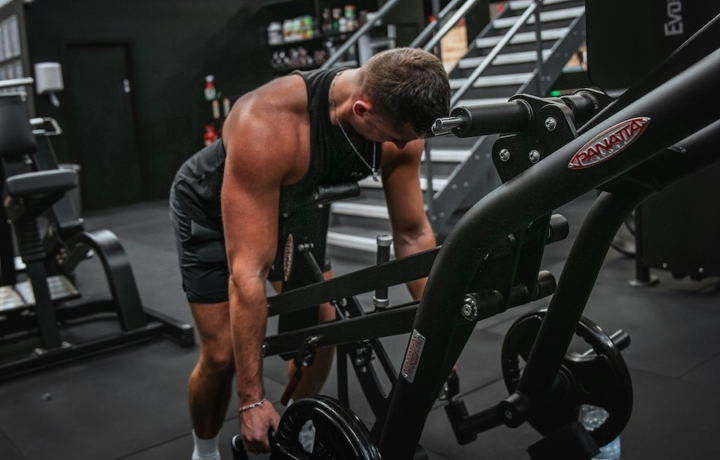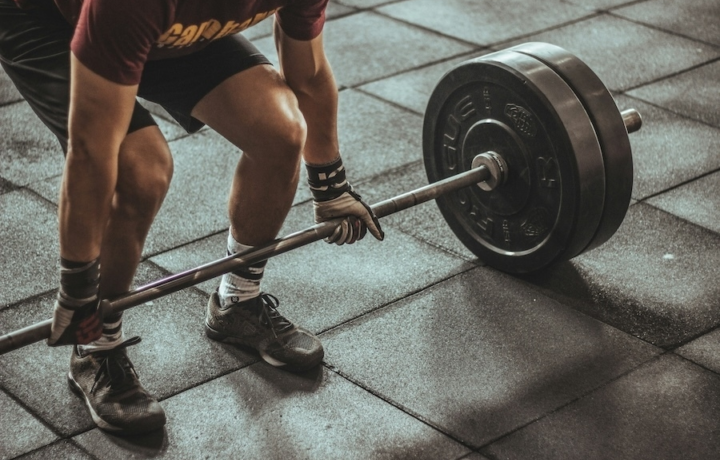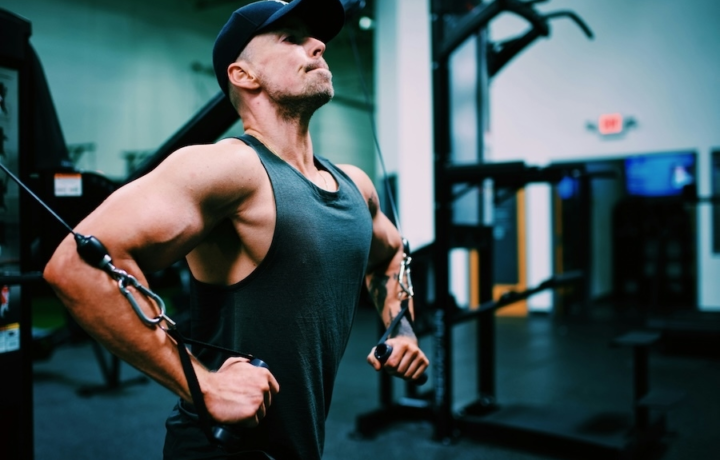Exercise
Barbell Deadlift

Barbell Deadlift
Calculate your one rep max
How to Perform
- Position your feet hip-width apart under the barbell with toes pointing slightly outward, then bend at your hips and knees to grip the bar with hands just outside your legs.
- Set your grip by placing hands shoulder-width apart in an overhand or mixed grip, keeping your arms straight and shoulders directly over the bar.
- Lower your hips and lift your chest to create a flat back position, maintaining a neutral spine while pulling your shoulder blades down and back.
- Take a deep breath into your diaphragm, brace your core, and create tension throughout your body before initiating the movement.
- Drive through your heels and push the floor away, keeping the barbell close to your body as you extend your knees and hips simultaneously.
- As the bar passes your knees, focus on driving your hips forward while maintaining a tight core and flat back position.
- Stand tall at the top with shoulders back, hips fully extended, and knees locked out, exhaling at the completion of the movement.
- Lower the weight by hinging at the hips first, then bending the knees once the bar passes them, maintaining your flat back position throughout the descent.
Important information
- Keep the barbell in contact with your legs throughout the entire movement to maintain proper leverage and reduce strain on your lower back.
- Never round your lower back during the lift—maintain a neutral spine position from setup to completion.
- If you feel the weight in your toes or the balls of your feet, shift your weight back to ensure you're pressing through your heels.
- Avoid jerking the weight off the floor; instead, create tension in your body before initiating a smooth, controlled pull.
1 Rep Max Calculator
Estimate your one-rep max for Barbell Deadlift

Barbell Deadlift
Calculate your one rep max
Exercise Details
Primary Muscles
Muscle Groups
Mechanic
Risk Areas
1 Rep Max Calculator
Estimate your one-rep max for Barbell Deadlift
Built for progress
Take the guesswork out of training
Create personalized AI-powered workout plans that evolve with you. Train smarter, track every rep and keep moving forward, one workout at a time.






The Barbell Deadlift stands as a cornerstone in strength training, revered across both powerlifting and bodybuilding communities for its unparalleled ability to develop total-body power. This compound movement primarily targets the posterior chain, with significant engagement of the glutes, hamstrings, and erector spinae muscles, though it effectively works nearly every major muscle group in some capacity.
What makes the deadlift particularly valuable is its carryover to real-world strength. The fundamental hip-hinge pattern mimics movements we perform daily, from picking up groceries to moving furniture, but allows for progressive loading that can transform your physique and functional capacity. For intermediate lifters, the deadlift offers a perfect balance of challenge and reward, serving as a reliable marker of overall strength development.
The beauty of the deadlift lies in its simplicity and efficiency. Few exercises deliver comparable hormonal responses, with research showing significant increases in growth hormone and testosterone following heavy deadlift sessions. This hormonal cascade creates an optimal environment for muscle growth throughout the entire body, not just in the directly targeted muscles.
Competitive powerlifters value the deadlift as one of the "big three" lifts in competition, often training variations to overcome sticking points. Meanwhile, bodybuilders appreciate how the movement develops thickness in the back, density in the hamstrings, and roundness in the glutes – all crucial elements for a balanced physique.
While classified as an intermediate movement, the deadlift rewards lifelong practice. As strength increases, many find their technique continually evolving, with subtle refinements leading to significant performance breakthroughs. The deadlift also serves as an excellent assessment tool, revealing weaknesses in the posterior chain that might otherwise go unaddressed in typical training programs.
For those seeking genuine strength development rather than just the appearance of strength, regular deadlifting provides indisputable results. It remains one of the most honest indicators of true functional power and a cornerstone of any serious strength training regimen.
FAQ - Barbell Deadlift
The barbell deadlift primarily targets your posterior chain, including the glutes, hamstrings, and erector spinae (lower back). It also engages your quads, traps, forearms, and core, making it one of the most complete full-body strength exercises available.
Start with feet hip-width apart, grip the bar just outside your legs, and hinge at the hips while maintaining a neutral spine. Drive through your heels, keep the bar close to your body throughout the movement, and fully extend your hips at the top without hyperextending your back.
Most intermediate lifters benefit from deadlifting 1-2 times per week with at least 48-72 hours of recovery between sessions. Due to the exercise's high neurological demand and recovery requirements, limit heavy deadlift sessions to once weekly if you're also performing other intense lower body training.
The most critical errors include rounding your lower back, starting with the bar too far from your shins, jerking the weight off the floor, and failing to brace your core. Also avoid looking up excessively (which compromises spinal alignment) and letting your hips rise before your shoulders when initiating the pull.
Consider deficit deadlifts (standing on a platform) to improve strength off the floor, rack pulls to target lockout strength, sumo deadlifts if conventional doesn't suit your biomechanics, or trap bar deadlifts to reduce lower back stress. Romanian deadlifts are excellent for targeting hamstring development and improving your hip hinge pattern.











